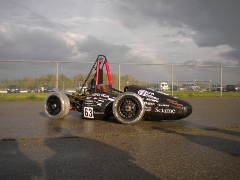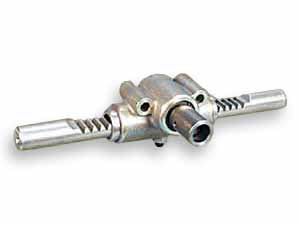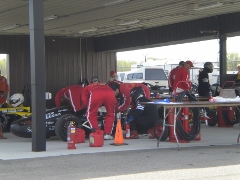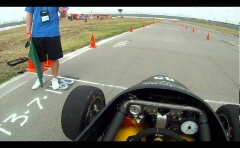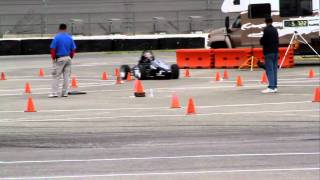The Cooper Union Motorsports
Visit our Webpage: http://fsae.cooper.edu/
LIKE US ON FACEBOOK: https://www.facebook.com/cooperFSAE?fref=ts
Introduction
Participants: Sergio Rodriguez, Gavin Kaplan, Amy Chambers, Wilfrido Castillo.
Following the success in creating the shifter system for the Cooper Union formula car, the next task assigned was to replace last year's version of the steering system and bracketry.
The Steering Task
The Steering Group shifted their focus to the driver control aspect of the Steering System and not so much as the entire steering system down to the suspension uprights. There were several constraints to the steering system that were rules driven. The steering system geometry was optimized so the final position of the steering wheel would lay as close to horizontal as possible, because the 2013 frame focused on the driver in a more reclined position.
In order to accomplish this nearly horizontal placement of the steering wheel, 2 high performance u joints were used to provide a sufficient angle from where the steering rack was mounted to the actual steering wheel. These high performance U joints had to be clamped down else there was a large bending motion within the column. This was solved by using a precisely machined shaft collar to secure the column and prevent this twisting motion while not providing friction along the column itself.
The amount of free play in the steering wheel, or the degrees the steering wheel would rotate before the tires actually began turning, was minimized because the play in the steering wheel plays a major role in the cornering of the formula car. The more play in the steering wheel the less handling the car has and the slower the formula car has to go to maneuver through each corner. The amount of play in the steering wheel was reduced by using precisely machined bushings to hold the column securely in place and prevent most forms of play. However; there exists minuscule amounts of play due to the quick release splines of the actual steering wheel and the steering column.
The steering column is to be tested in FSAE Michigan 2013, results will be posted
Pictures
The steering rack is the mechanism that transfers the force of the driver rotating the steering wheel to the tie rods attached to the wheel uprights causing them to turn.
 *need picture of steering bracket
*need picture of steering bracket
The steering brackets hold the steering rack in place and in the correct orientation. They were welded onto a bottom frame member.
 *need picture of steering geometry
*need picture of steering geometry
The steering geometry was designed precisely to fit all the constraints which included the maximum angle the u-joints could bend, the angle the steering wheel would be at, and the angle the steering rack would be.
Michigan 2013
Inspection
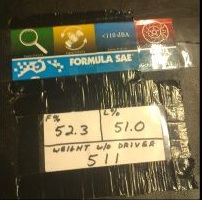
In order for the Cooper Motorsports car to compete in Formula Michigan 2013, our car first had to pass a series of technical inspections. A sticker was awarded with every inspection that was cleared, for a total of 4 stickers along with a car weigh in. The technical inspections were to ensure that the car was built rules compliant and that the car is cleared as safe; these cars are high powered machines that can be very dangerous so the inspections were necessary. The first inspection is the general technical inspection, going over every nut and bolt on the car and ensuring everything is cleared. The second level of inspection is a tilt test, the car is tilted at a 60 degree angle to ensure no fluids leak from the car. Following the tilt test, a noise test is done to ensure the car will not be harmful to hearing, since there will be many people around the cars. The final inspection was a brake test, the brake test ensures that the car can come to a stop within a set distance and that the tires are fully functional and lock when the brake is applied.
General Technical Inspection
Tilt Test
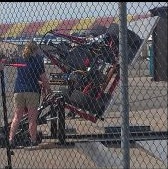
Fueling
Dynamic Events
Endurance

Acceleration
Skidpad
After all inspections were passed, the car competed in several dynamic events to test how well the car could perform. The events that were competed in were: acceleration, skidpad, autocross and endurance. Acceleration tested how quickly the car could accelerate and compare our acceleration with those of other teams. Skidpad tested the handling of the car, a track in the form of a figure 8 was made and the object was to complete 2 circles to the left and then 2 to the right in the quickest time. Autocross was a sprint race were the car had to complete a course as quickly as possible, a course that was challenging however because it had many sharp turns. Endurance was the same as autocross except instead of trying to complete 1 lap as quickly as possible the goal was to complete 20 laps with 1 driver change as quickly as possible, 20 laps totaling to 20 km.
